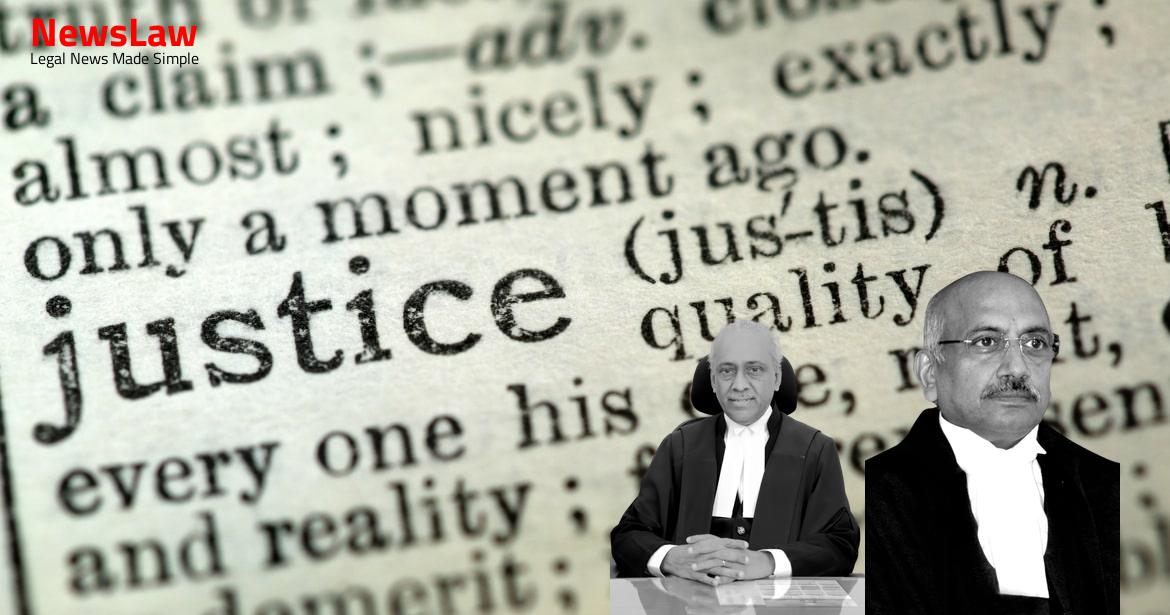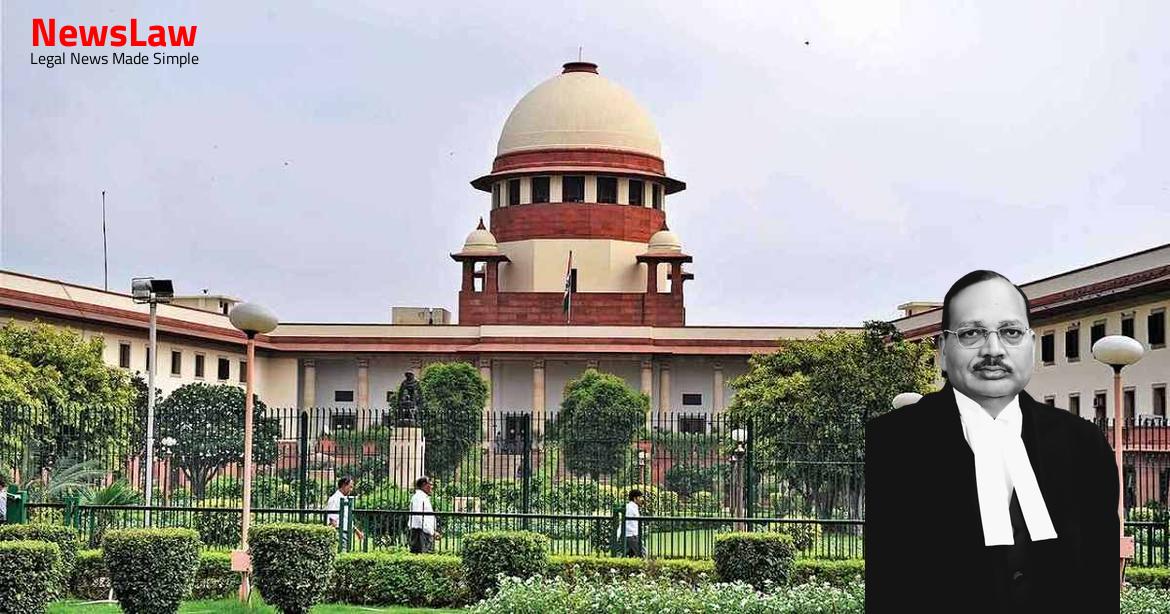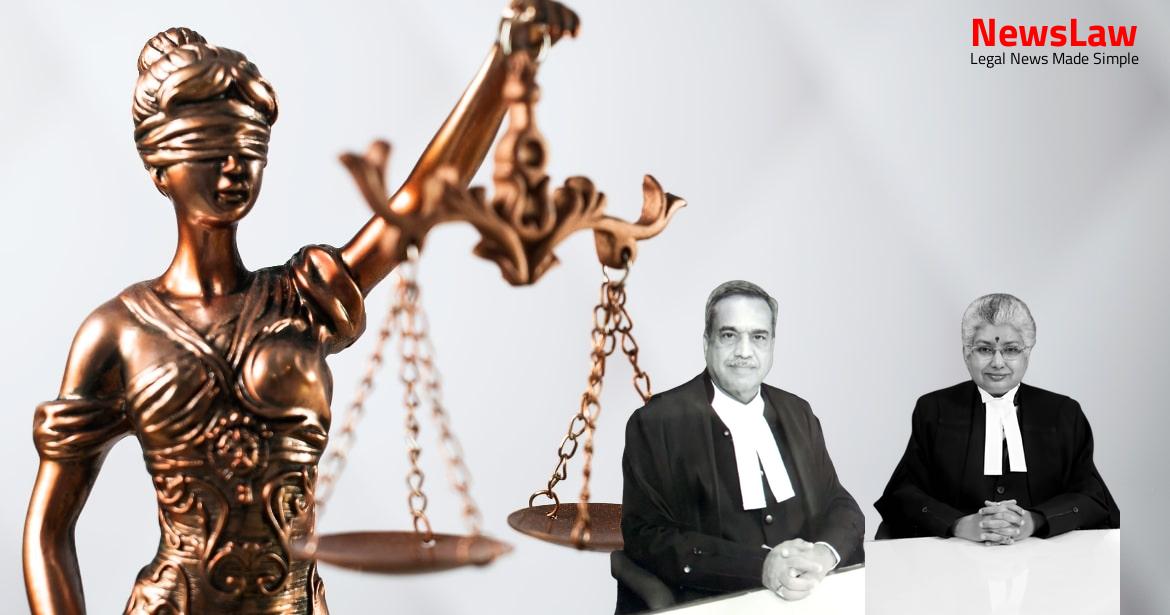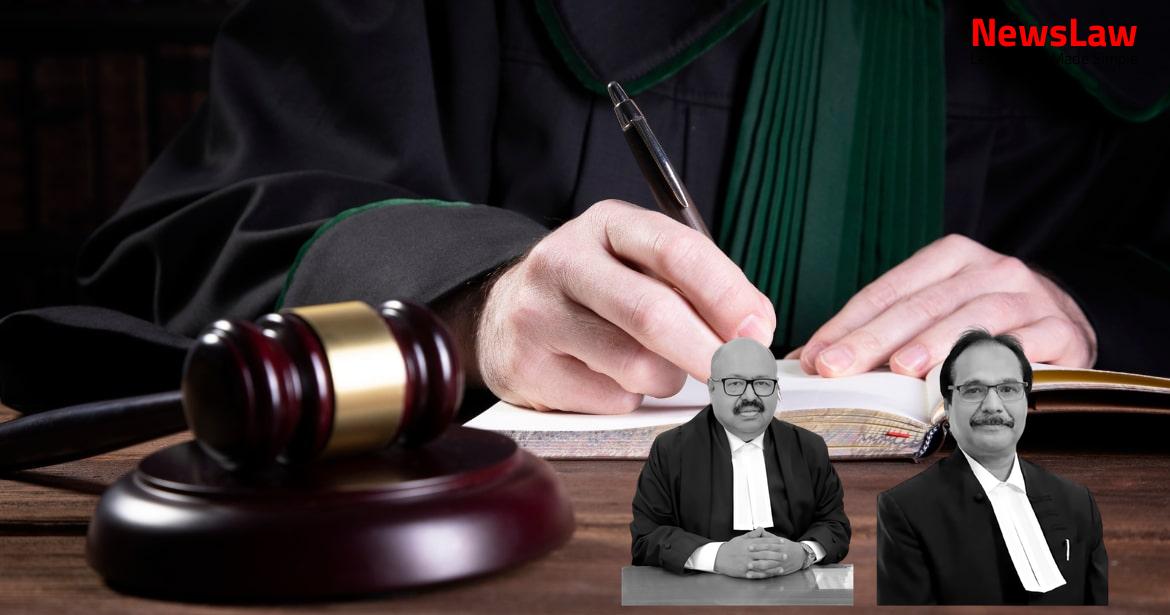Explore the nuanced legal analysis in a recent case where disputed payment claims and allegations of collusion took center stage. The Court’s in-depth examination highlighted the challenges faced in adjudicating contractual matters and the significance of evidence presentation in legal proceedings. Stay tuned to unravel the complexities of this intriguing legal case.
Facts
- The appellants had to approve the DPR and pay pending bills based on the Final Joint Survey/Measurement Report dated 24.10.2013 as their only option.
- The Single Bench of the High Court allowed the writ petition by M/s. Puna Hinda, quashing certain letters and directing payment of Rs. 31,57,16,134/- with interest.
- The Single Judge ordered payment based on the Final Joint Survey/Measurement Report for making a revised DPR, to be paid within four months.
- The Division Bench of the Gauhati High Court upheld the Single Bench’s decision, stating that resurvey and DPR revision would not be fair due to the passage of five monsoons.
- The writ petitioner claimed a sum of Rs.23,68,11,589/- on 12.8.2015 for objection to the constitution of the Board of Officers.
- The work order was issued on 15.7.2009, and the writ petitioner filed a writ petition on or about 23.11.2015.
- The writ petitioner submitted a final bill on 17.6.2014 claiming the aforementioned sum of Rs.23,68,11,589.02.
- The Board of Officers made recommendations regarding road formation width and work division into Formation work, Permanent work, and Surface work.
- Final bill was returned unactioned on 10.8.2014, and the bid of the writ petitioner was accepted at Rs.31,87,58,950/-
- A Notice Inviting Tender (NIT) was issued on 22.10.2008 for road construction and improvement under SARDP.
- Inter-departmental communication was sent to Head Quarters of Seema, and joint survey results were communicated to the writ petitioner.
Also Read: Interpretation of Will and Hindu Succession Act: Legal Analysis
Arguments
- The officer who wrote the letter in question was not the competent authority to do so.
- There are serious disputes regarding the authenticity of the Joint Final Report and the work done.
- Disputed questions of facts could not be adjudicated by the Writ Court as they relate to the recovery of money.
- The order of the High Court was considered unwarranted and untenable due to the availability of an arbitration clause to resolve disputes.
- The claim was deemed to be based on imaginary and arbitrary grounds which were being enhanced over time.
- Reference was made to a judgment where a similar situation was dealt with by informing the petitioner of the cancellation of the Board of Officers which was initially constituted at the petitioner’s request.
Also Read: Land Compensation Redetermination Case
Analysis
- The judgment of the Court in Joshi Technologies International Inc v. Union of India & Ors was relied upon
- The Court placed reliance on the findings and reasoning of the aforementioned case
- This case played a significant role in the decision-making process of the current case
- The High Court’s order was based on the inability to ascertain final measurements after five monsoons, deeming the dispute unsuitable for a writ petition involving disputed facts.
- No admission from the appellants implies that the amount in question is not finalized.
- The report prepared after completion of work, not reflecting certain work in the measurement book from execution, appears to inflate the petitioner’s claim.
- Pure contractual matters in private law are best resolved by the parties’ agreed forum rather than a writ court.
- The attempt to resolve measurement disputes through a Board of Officers was thwarted by the petitioner for unknown reasons, indicating a lack of cooperation.
- The lack of acceptance of the Joint Survey Report by the competent authority negates any rights the petitioner may claim due to the inability to undertake measurements over time.
- The initial claim of Rs. 23,68,11,589.02 has increased to Rs. 35,51,80,651, but the petitioner cannot dispute earlier communications for the current proceedings.
- The assertion that full payment against the work order claim has been made is contradicted by the increased final amount claimed.
- Contemporary evidence and periodic measurement books can serve as a basis for determining liability when final measurements are unfeasible on-site.
- The basis of the Joint Survey Report has been discredited, suggesting a potentially biased act in favor of the petitioner by certain appellant officers.
- The lack of expertise in measurements or road construction prevents the Writ Court from accurately assessing the amount due and payable, making arbitration the appropriate forum.
- The decision attributed to the competent authority was communicated by an officer on their behalf, adding a layer of complexity to the approval process.
- The possibility of collusion between appellant officers and the contractor cannot be dismissed, potentially affecting the credibility of the Joint Survey Report.
- The dispute over payment amount and whether it is owed at all remains contentious and hinges on disputed factual issues.
- The argument presented in the memorandum of appeal was based on a specific assertion and lacked supporting evidence.
- An affidavit from an appellant officer was notably absent from the appeal, raising questions about the thoroughness of the documentation process.
- Collusion was found to be the basis of the writ petition filed before the High Court.
- The present appeal was allowed while the writ petition filed by the petitioner before the High Court was dismissed.
Also Read: Legal Analysis in Disciplinary Proceedings
Case Title: UNION OF INDIA Vs. M/S. PUNA HINDA (2021 INSC 448)
Case Number: C.A. No.-004981-004981 / 2021



